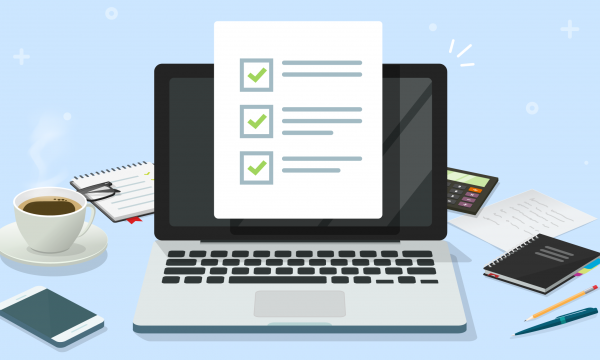Review your budget
Before you hit the car lot (or the websites), you’ll want to determine what you can afford to put down and what kind of payment you can comfortably make. An often-recommended rule of thumb is that your car payment shouldn't be more than 10% of your take-home pay. You’ll also want to estimate your minimum down payment, factoring in some just-in-case money for repairs.
If this is a first-car purchase for your teen, you’ll want to get them involved in this part of the process, especially if some of the financial responsibility will be theirs. (We have more to say on this subject; you can check it out here.)
Your banker should also be able to help you calculate payments, so this might be a good time to start the auto loan conversation. Speaking of costs and repairs, you’ll need to be thinking about whether you’ll be purchasing a used vehicle vs. one that’s certified pre-owned (CPO). A CPO vehicle will cost more, but will come with extended warranties. Gap and/or service protection on your auto loan is another option — both dealers and banks offer these add-ons that are worth looking into.
Do your research
Make a list of three to five cars that meet your needs and fall within your budget. Once you have your list, do research on each car model to find out common defects, recalls, average cost, and if possible, estimated repair costs. With these findings in hand, you’ll enter the market informed and better able to spot a potential problem. In addition to repair costs, it’s also a good idea to research car insurance quotes and how much gas the vehicle will use. Trust us, you’ll be glad you spent extra time on this discovery phase later. (We can’t make guarantees, but legwork generally reduces the margin of error.) And that teen driver we asked about earlier? Including them in the research may be homework they’ll welcome. Check out your teen’s first car: buying and beyond.
Comparison shop
Aside from dealerships, you can find great deals on used cars at local public auctions, from private sellers, and on used car websites. Each source has its advantages: Dealerships offer a wide selection, private owners will most likely offer the lowest prices, and national websites may uncover a local treasure. Auto auctions can offer deep discounts, but you definitely have to do your homework, and even then, there is no guarantee. Use available free online resources to research, compare, and price pre-owned vehicles in your local area. If you go the route of private owner purchase, check out our helpful tips for smooth shopping and closing the deal.
Find the value
Once you’ve found a car you love, estimating its value will help you determine if the asking price is one you can live with. Cars of the same model and year may have different price tags. That’s because things like mileage, features, and additional factors — such as current market, popularity and demand, and the dealer’s reconditioning costs — can all affect vehicle value. It can be confusing, so your best bet is to use a pricing tool to give you an idea of your target vehicle’s value. Both Kelley Blue Book’s pricing tool or NADA’s used car guide can help you get a price quote. If you have it, you’ll want to plug in the vehicle identification number for the truest estimate.
Check the car out thoroughly
Even before you head out on a test drive, take some time to really look over the vehicle you’re considering and watch for potential issues. Check the body for signs of damage, rust, or repair work. Look at the shape and wear of the tires and make sure that all four of them are the same reputable brand, then give the interior the sniff test. If it smells moldy or strange, proceed with caution. As long as you’re in there, look for wear in the upholstery and carpet (pull up the mats), move the seats, and test out all knobs and buttons. You will also want to remember to look underneath the hood to make sure everything works properly and nothing’s sludge-y.
Make sure you’re covering all your bases — no matter where you’re shopping — with UBT’s handy downloadable pre-owned car checklist.
Go for a test drive
Once you’ve done your visual inspection, take your test drive. You’ll want to see if you can get in and out easily, how roomy it is, and whether the driving position is comfortable. Check for lumbar support, seat comfort, steering wheel tilt, and visibility. Test the A/C and heat, give the brakes a test (be sure to listen for squeaking), and check the headlights. After the test drive, if you’re giving this car the green light, it’s time to call the mechanic.
Take it to the pros
Call your mechanic and get a pre-purchase vehicle inspection. (If you don’t have a regular mechanic, ask friends for a referral or read online reviews.) The cost will likely be in the $150–$250 range, but it could help you uncover otherwise undetected issues, which makes it a really smart investment. If the car you’re looking at is certified pre-owned, there's already been an inspection and the car has a warranty, so spending the extra dough is probably not necessary.
Get a vehicle history report
If your mechanic recommends it (or your gut just tells you it’s a good idea), get a detailed vehicle history report. You’ll need the 17-character vehicle identification number (VIN); just plug it into a site like Kelley Blue Book or Autocheck.
Negotiate the price
Not many people like negotiating, even when it’s part of their job. But negotiating doesn’t have to be unpleasant or intimidating. Decide what you’re willing to spend to get the car and make an opening offer that is based on what you uncovered when researching the vehicle, but lower than your maximum price. If you and the seller can agree on a price that is near the average price paid (and that you don’t hate), you have yourself a car.
Get financing
With all the boxes checked, you should be able to finance knowing you have a dependable vehicle you’re pleased with and can afford. The dealer may have some options that work for you, or you may be comfortable with folks you know at your own local bank. Learn more about how we can help here.
Speaking of the bank, rolling in some other, high-interest debt or refinancing an existing loan may be a wise move. We have some smart-money tips on refinancing here. However you decide to finance, this is your last decision, and you should make it in a way that makes you comfortable.
Learning Center articles, guides, blogs, podcasts, and videos are for informational purposes only and are not an advertisement for a product or service. The accuracy and completeness is not guaranteed and does not constitute legal or tax advice. Please consult with your own tax, legal, and financial advisors.



